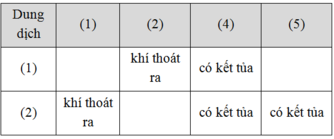Read the following passage and mark the letter A, B, C, or D on your answer sheet to indicate the correct answer to each of the questions from 35 to 42.
There are two main hypotheses when it comes to explaining the emergence of modem humans. The ‘Out of Africa’ theory holds that homo sapiens burst onto the scene as a new species around 150,000 to 200,000 years ago in Africa and subsequently replaced archaic humans such as the Neandertals. The other model, known as multi-regional evolution or regional continuity, posits far more ancient and diverse roots for our kind. Proponents of this view believe that homo sapiens arose in Africa some 2 million years ago and evolved as a single species spread across the Old World, with populations in different regions linked through genetic and cultural exchange.
Of these two models, Out of Africa, which was originally developed based on fossil evidence, and supported by much genetic research, has been favored by the majority of evolution scholars. The vast majority of these genetic studies have focused on DNA from living populations, and although some small progress has been made in recovering DNA from Neandertal that appears to support multi-regionalism, the chance of recovering nuclear DNA from early human fossils is quite slim at present. Fossils thus remain very much a part of the human origins debate.
Another means of gathering theoretical evidence is through bones. Examinations of early modem human skulls from Central Europe and Australia dated to between 20,000 and 30,000 years old have suggested that both groups apparently exhibit traits seen in their Middle Eastern and African predecessors. But the early modem specimens from Central Europe also display Neandertal traits, and the early modem Australians showed affinities to archaic Homoffom Indonesia. Meanwhile, the debate among paleoanthropologists continues, as supporters of the two hypotheses challenge the evidence and conclusions of each other.
(Source: www.coursehero.com)
It can be inferred from the passagethat_____________
A. there is likely to be an end to the debate in the near future
B. the debate will interest historians to take part in
C. the debate is likely to be less important in future
D. there is little likelihood that the debate will die down















